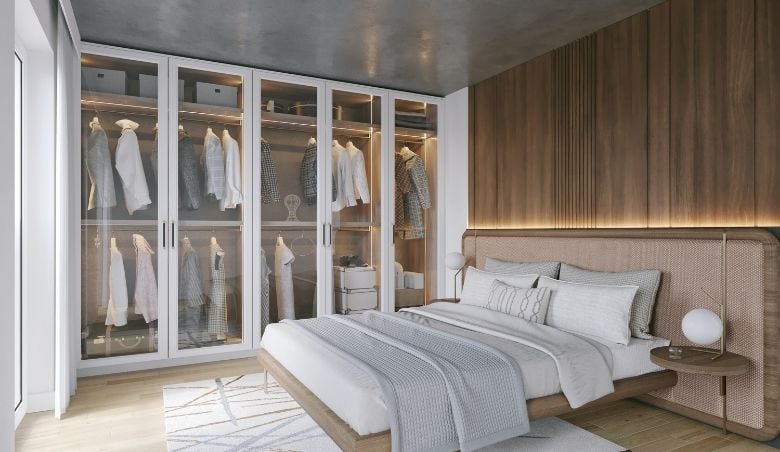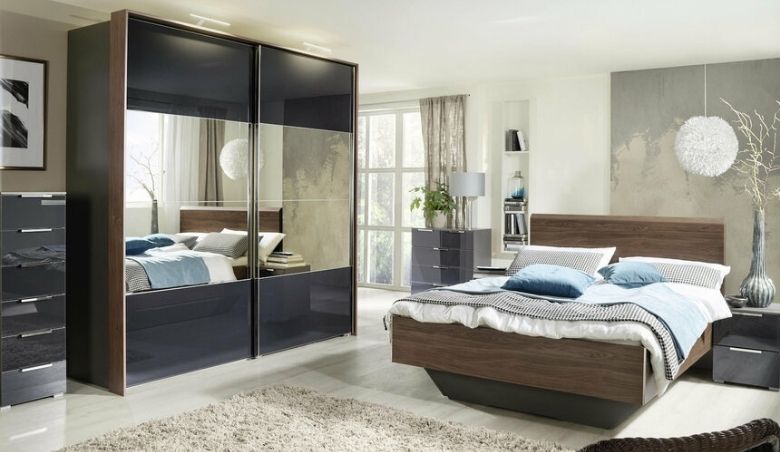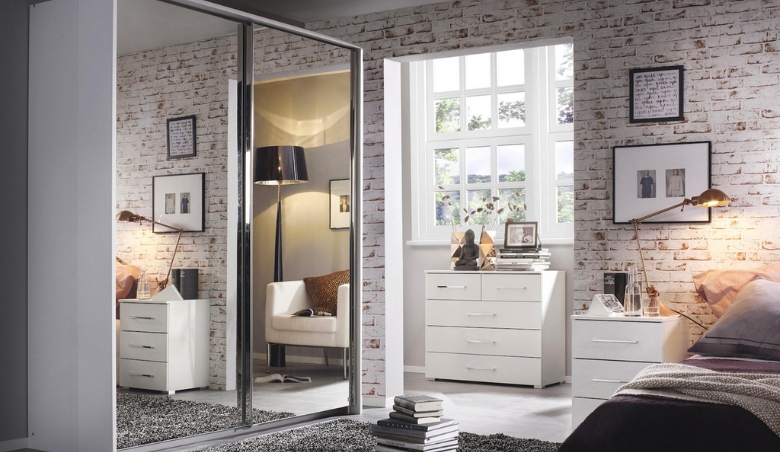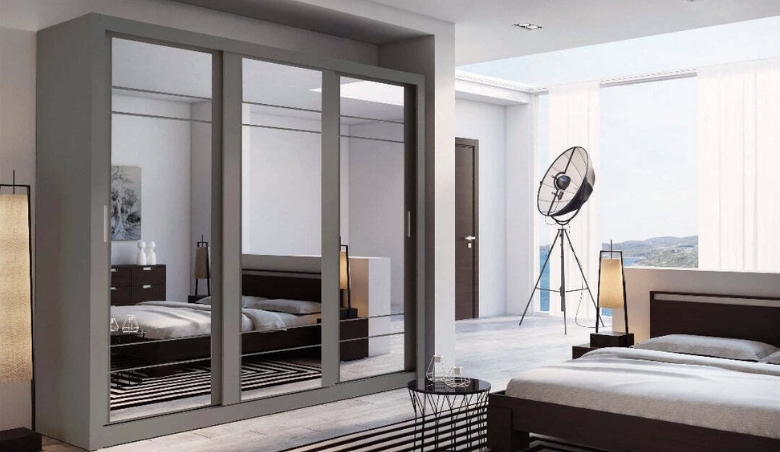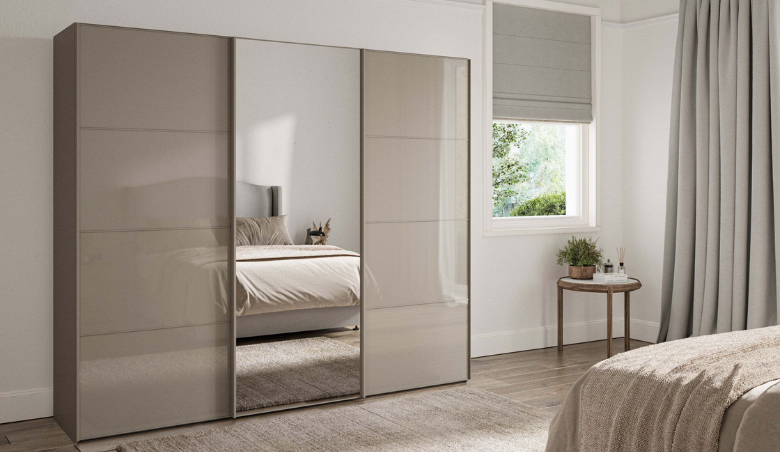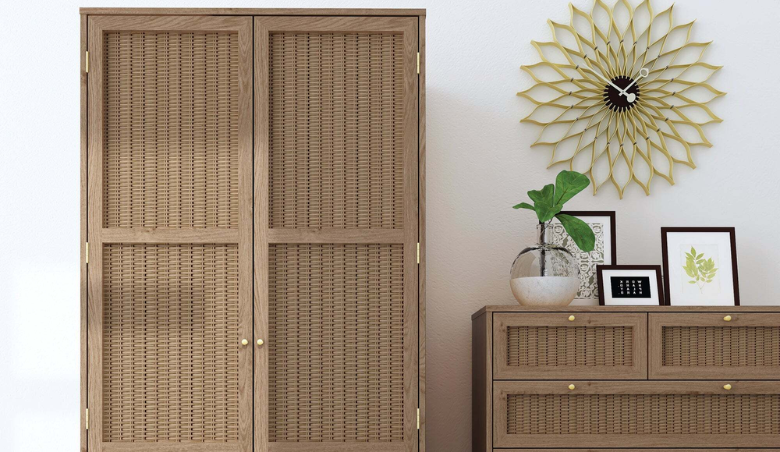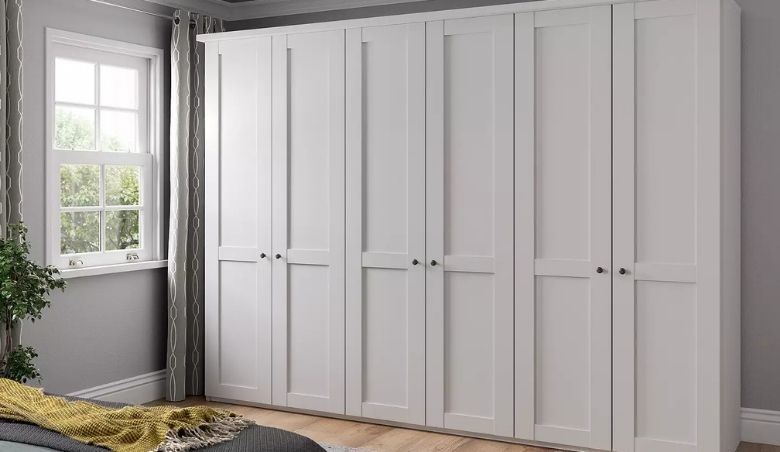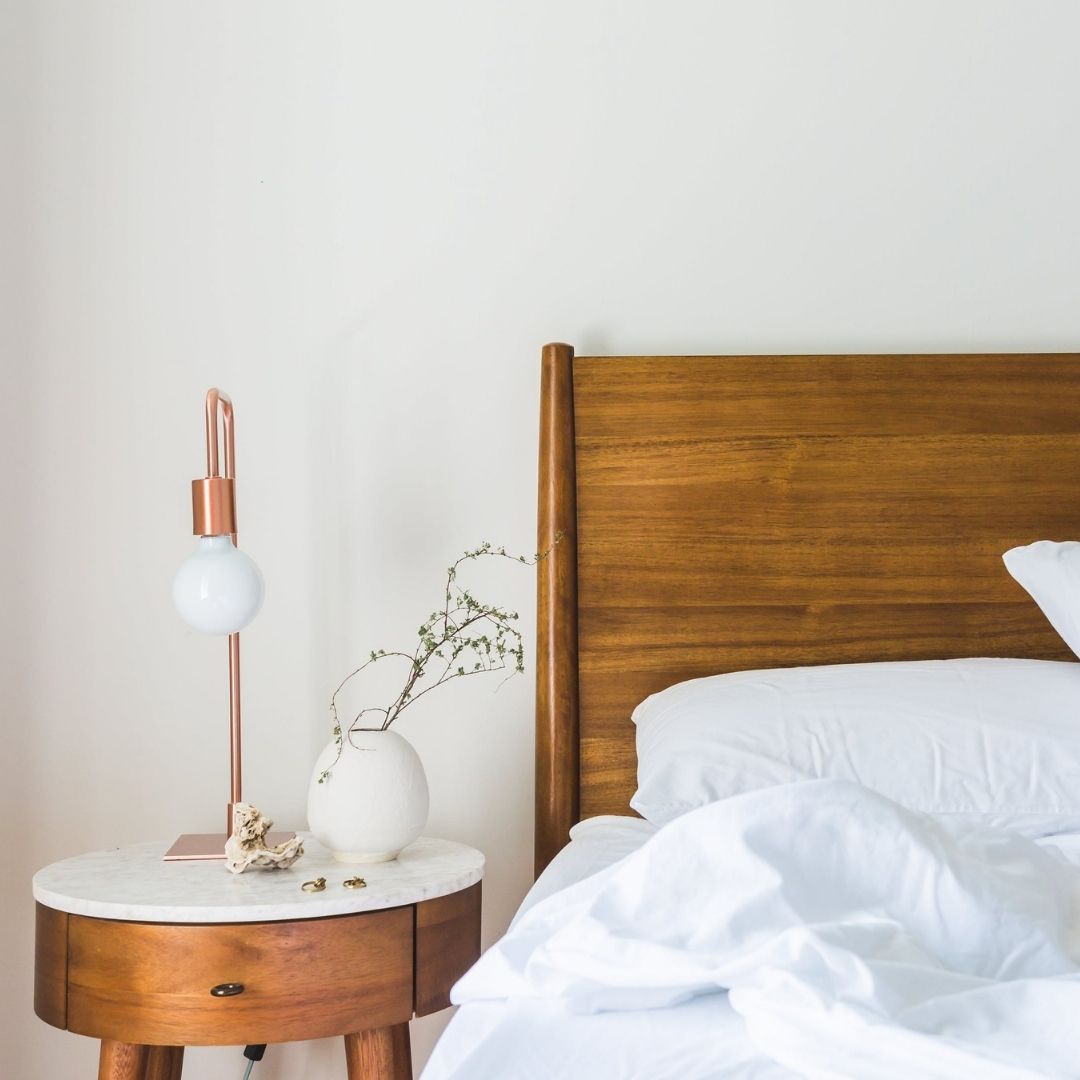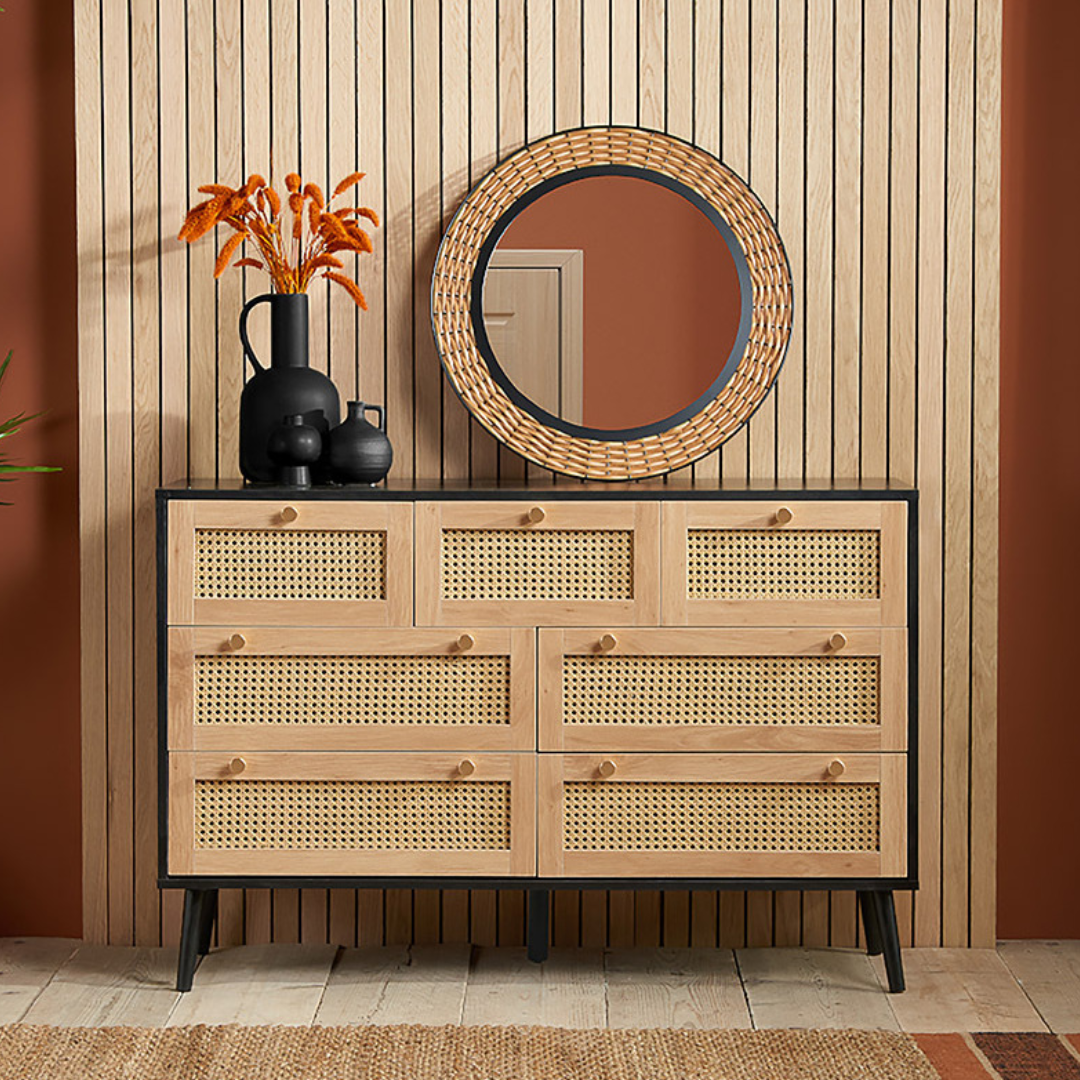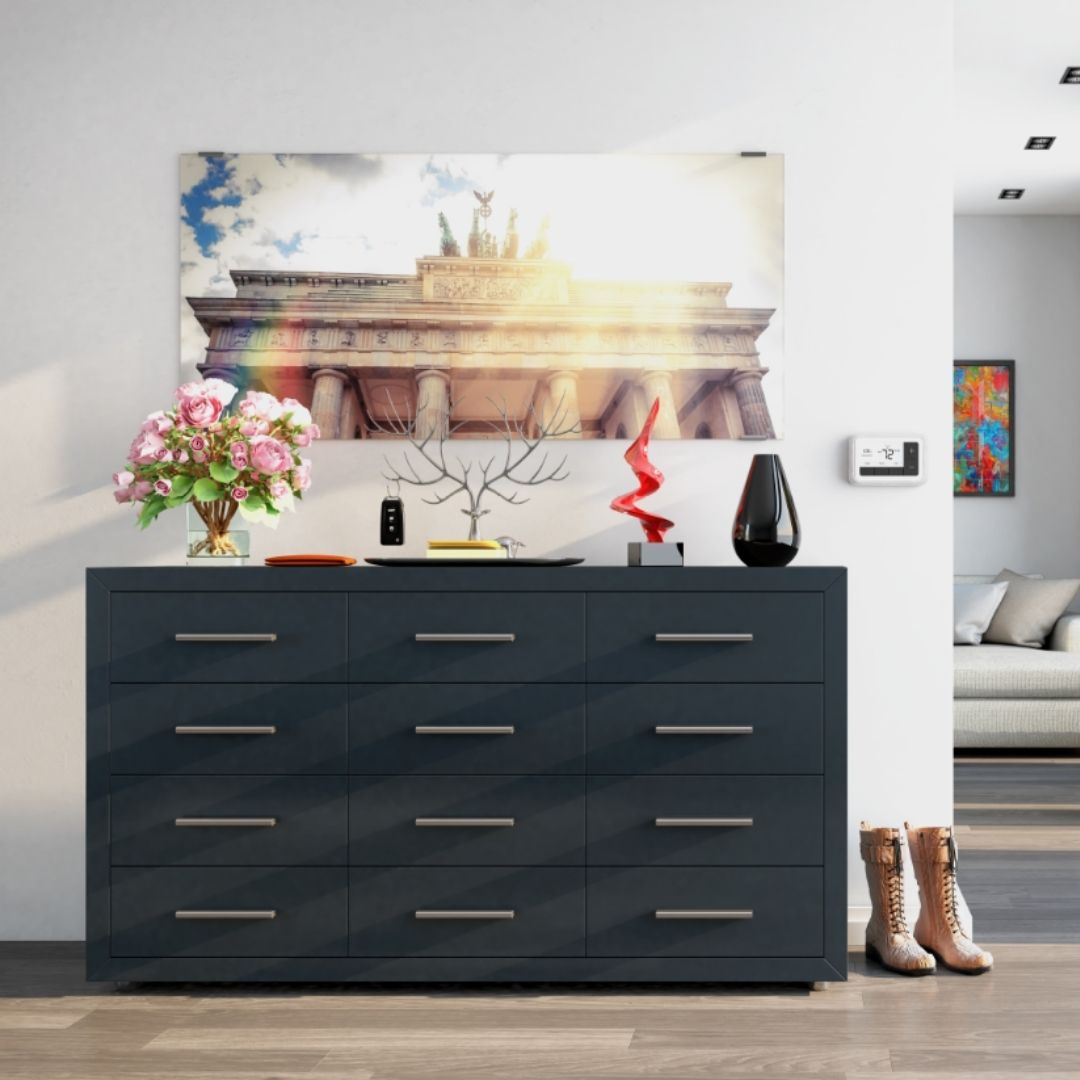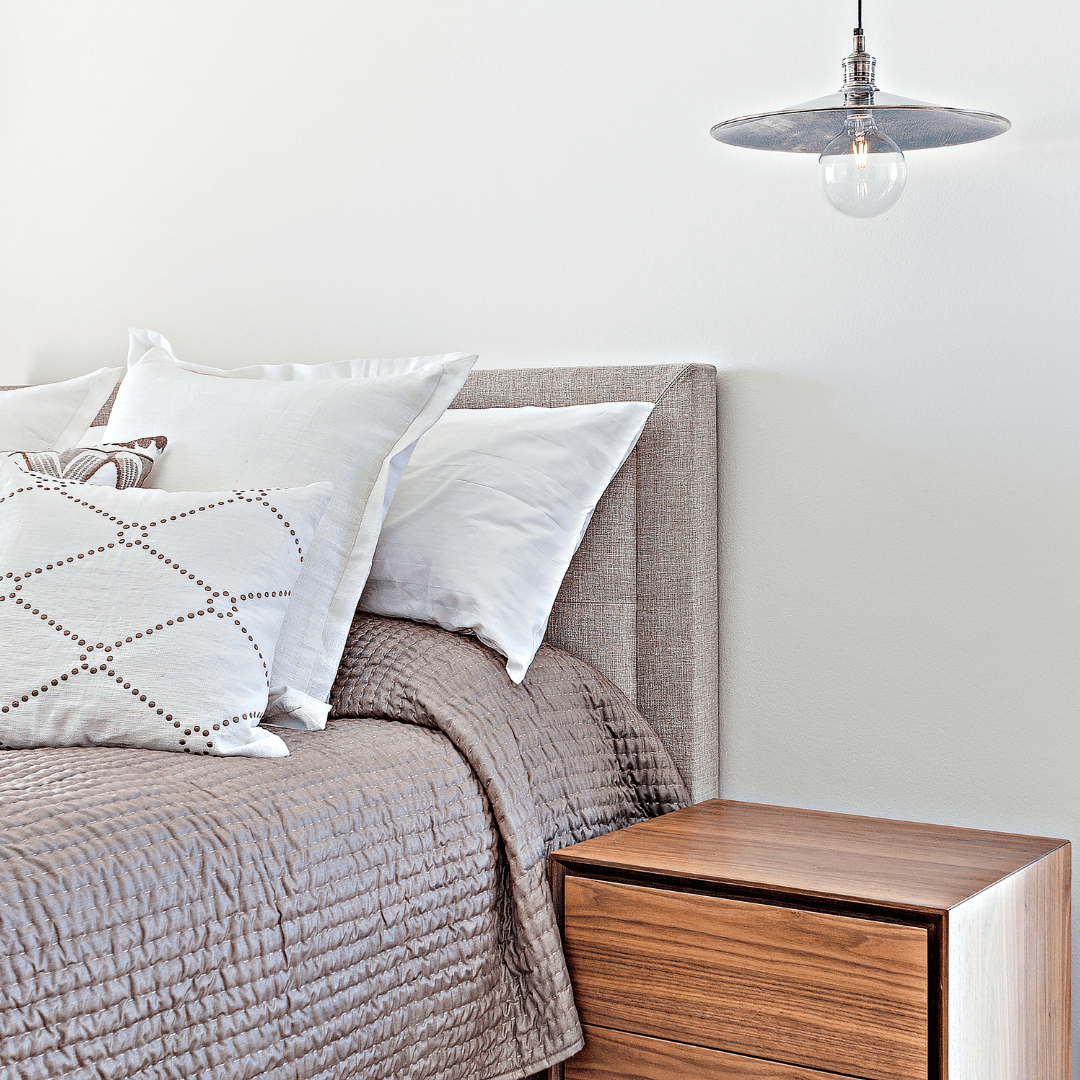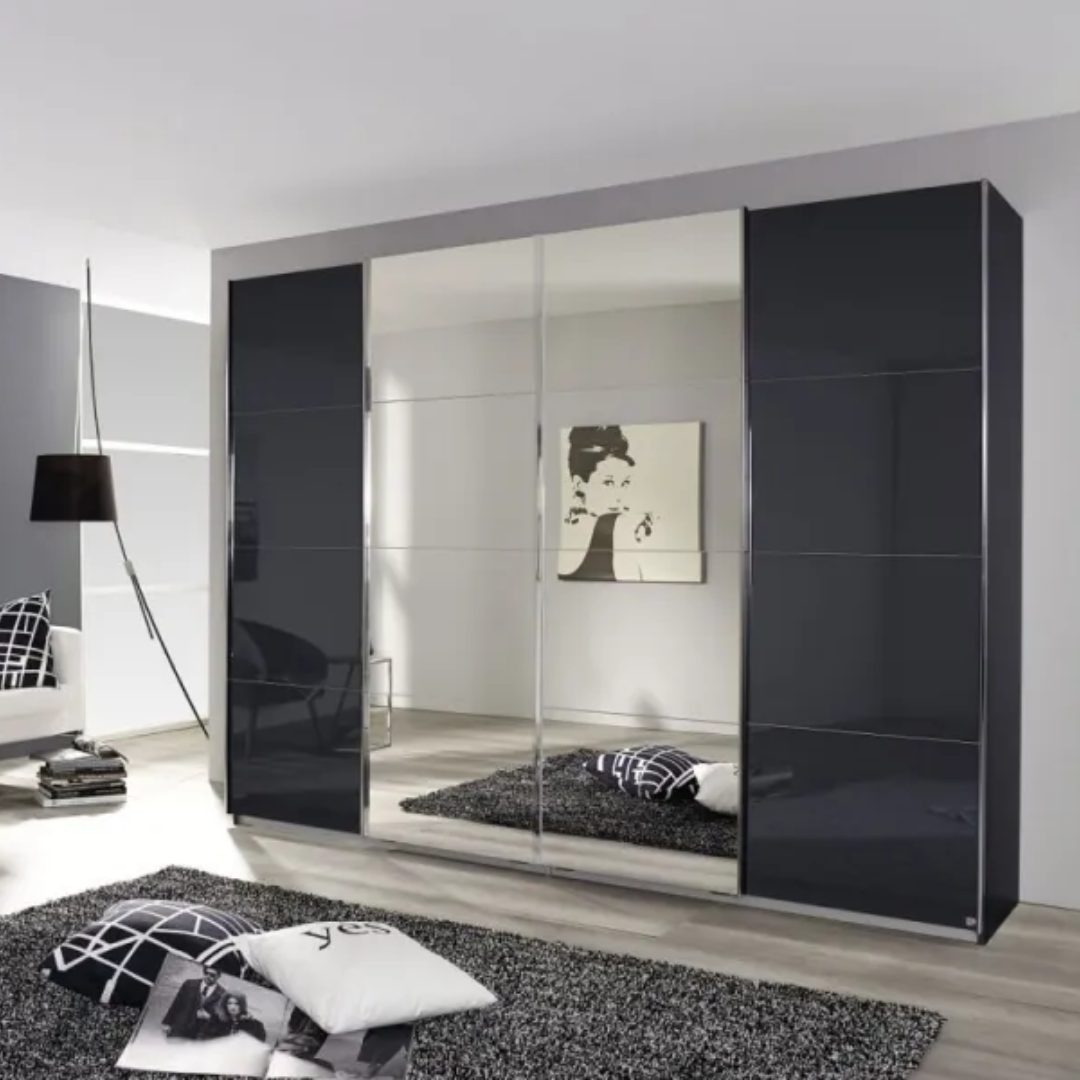‘Tidy bedroom, tidy mind’ – there’s no denying that the environment you sleep in can have a significant psychological effect; a disorganised bedroom can increase stress levels, impact the quality of your rest time, and be a practical annoyance!
Having suitable storage is key to turning your bedroom into a clutter-free sanctuary, and a carefully chosen wardrobe is the item of furniture most likely to provide scope for more organised living. However, it can be difficult to find the perfect storage option for your bedroom. That's why we've put together our top tips on how to choose a wardrobe!
1. Usage
There are hundreds of different wardrobes on the market, from two-door, three-door, sliding, mirrored, fitted and freestanding. And that’s just the frame – once you open up the doors there are unlimited options regarding the combination and configuration of hanging space, drawers, shelves and shoe racks that can be incorporated inside.
So, to start with, the first question to ask yourself is what sort of storage space do you mainly need? Hanging space for clothes, shelves for shoes, drawers for smaller clothing items, sections for cosmetics or accessories, or a combination?
Once you have set out exactly what your wardrobe will be used for, you can think about the functionality it needs to offer, which will help direct both the exterior and interior specifications you need it to meet.
2. Functionality
Knowing the length of hanging space that you will roughly need in proportion to the type of clothes you have is important. If you are going to store long coats, evening gowns and dressing gowns in the wardrobe rather than elsewhere in the house, you will most likely require hangers that optimise the full height of the wardrobe, whilst suits, short dresses and jumpers can hang comfortably on half-height rails, which instantly doubles the amount of hanging space.
When it comes to shelves and drawers, again think carefully about what you will, primarily, be storing on them. Many wardrobes now offer super-innovative interior designs with built-in shoe racks, jewellery drawers, and adjustable cubby holes that enhance organisation options, reduce clutter and potentially remove the need for additional furniture in the bedroom.
The depth of shelves is also a consideration – beyond a certain point, having a deeper shelf creates a black hole where clothes disappear, meaning you may struggle to find items right at the back!
Beyond a certain point, having a deeper shelf creates a black hole where clothes disappear!
3. Size
Consider exactly where in your bedroom the wardrobe is going to go and be quite sure of this; a large piece of furniture is often difficult to move around (and impossible if it is a fitted design – obviously!) and many rooms only have one suitable location for an item of this size, so it needs to fit perfectly.
A common question is how big should a wardrobe be? This comes down to a wide number of factors including the space in your bedroom and the requirements you have for the wardrobe. In terms of what's on the market, most manufacturers make wardrobes to have at least 45cm of depth, which should be enough to give you the option to have ample shelf, drawer and hanging space. While a standard wardrobe is usually not more than 182cm tall, the width can vary largely with some wardrobes being as compact as 60cm or as wide as 244cm.
If your budget and space allow, our tip would be to go as big as possible though – you can never have enough storage space – but within realistic limitations, so think practically about whether there will be enough clearance room to easily open doors, walk around and fit your other items of furniture in comfortably.
Go as tall as possible towards the ceiling to maximise storage. This space can be invaluable for stashing spare bedding, seasonal or occasional items that don’t require daily use.
Go as tall as possible towards the ceiling to maximise storage - this space can be invaluable for stashing spare bedding and occasional items
4. Types of wardrobe
Once you have pinpointed your functionality requirements, you can start considering the different types of wardrobe that are available.
The first big decision to make is whether to choose a freestanding wardrobe or go fully fitted. Fitted designs are great for rooms with odd angles, awkward alcoves, or sloping ceilings; available from specialist suppliers, they are usually custom-made and significantly more expensive ranging from £2,500 and upwards.
Free-standing wardrobes are most versatile when considering design and cost; they are usually available for faster delivery and can be moved from room to room, or house to house if needed. The main types to choose from are:
Two-door panel wardrobes: these generally follow a pretty standard design where the interior is split in half with one side as drawers and the other with rails.
Three-door panel wardrobes: offering a little more space, this design incorporates another compartment of shelving or rails.
Sliding wardrobes or hinged doors: a sliding design eliminates the need to open doors outwards and is great in tight spaces. Hinged doors are more common though, and mean that you could mount a mirror or additional hooks/ racks on the inside.
Doorless: a frame-stand allows you to create a display as well as store clothes. Easily collapsible and movable, standalone rails can be used in addition to a traditional wardrobe, but do appeal to quite a specific, ‘on-trend’, taste.
5. Style
As a large and dominant piece of furniture, the design of the wardrobe contributes greatly to the overall theme and style of the bedroom.
The different styles available are endless, from timeless, versatile classics, to high-gloss, slick contemporary; from ornate French boudoir to minimalist Scandinavian chic.
Small touches like the handles can also have an impact on the wardrobe’s overall appeal; whether you go for ornate glass knobs, slim brushed-chrome handles or ring pulls, these subtle accomplices can be customisable and help to hone the overall stylistics.
Also consider if you want to complement your wardrobe with other pieces of furniture such as a bedside cabinet, chest of drawers or dressing table. If you prefer these to be matching, check if the wardrobe is part of a suite.
6. Material and finish
The material, colour and surface finish of your wardrobe is a huge contributor to its style and also the level of practicality it can offer. There are many choices available, including modular options which means you can mix and match to create a bespoke look unique to you! Here is a guide to the best materials for wardrobes
Solid wood: one of the most highly used materials, solid wood is robust and hardwearing, with each type bringing a different feel and effect.
MDF or particleboard: common options these days, they are cost-effective, economical and reasonably durable wardrobe materials.
High gloss finish: introducing a slick, contemporary look to your room, this shiny finish is mainly available in either black, white or very light colours.
Matt finish: a soft matt finish will ensure your item doesn’t compete with other furniture in the room, and fits in effortlessly into any space.
Glass and mirrors: through reflecting the light, opaque glass or mirror adds an additional dimension to the room, creating a bright effect that complements most interiors. A common question we're often asked is if mirrored wardrobes are a good idea? Mirrored wardrobes provide a multitude of benefits doubling up as a storage space and mirror while bouncing daylight around your room to give your space a brighter, larger feeling. However, they can become the location of numerous fingerprints so do keep some glass cleaner and a cloth on standby. Both functional and fashionable, mirrored wardrobes won't be going anywhere anytime soon!
Painted finish: available in many colours, painted wardrobes can also be treated with various different finishes, tailoring it to exude a more rustic, fresh, elaborate or boho look, depending on your style preference.
Leather: a newer wardrobe material choice, the use of leather whether faux or vinyl panels on your wardrobe doors will make a bold statement in your space. The use of the same material for your headboard will tie together the design feature in your bedroom.
7. Practicality
As a bulky item of furniture with features that can vary greatly from product to product, there are some other logistical factors on the ‘perfect wardrobe checklist’ I would highly recommend considering before you make a purchase:
Double check sizes and dimensions: it’s very easy to underestimate how much room a piece of furniture like this can take up, so check and check again when it comes to measuring dimensions and the amount of clearance space needed. Plotting the shape out on the floor with masking tape is always helpful as you plan.
Delivery: check with the retailer if delivery costs are included, and that this includes taking the wardrobe to the final destination in the room – you don’t want it left downstairs if it needs to go in a third-floor bedroom! Measure hallways, stairs and doorways to ensure you can fit the wardrobe through comfortably; if the space is very restricted you may need to consider a flat pack.
Assembly: wardrobes are usually heavy and bulky, so you may require help (and patience!) to assemble. Pre-assembled products will save time but are usually pricier, and more difficult to manoeuvre into place.
Safety: as a tall, freestanding item, make sure you can securely fasten the wardrobe to the wall or anchor it to the floor if you have young children who might be tempted to use it as a climbing frame!
For more style inspiration to create your perfect home, follow us on Instagram and Pinterest, or to search and discover over 100+ furniture retailers across the entire market, simply click here.

